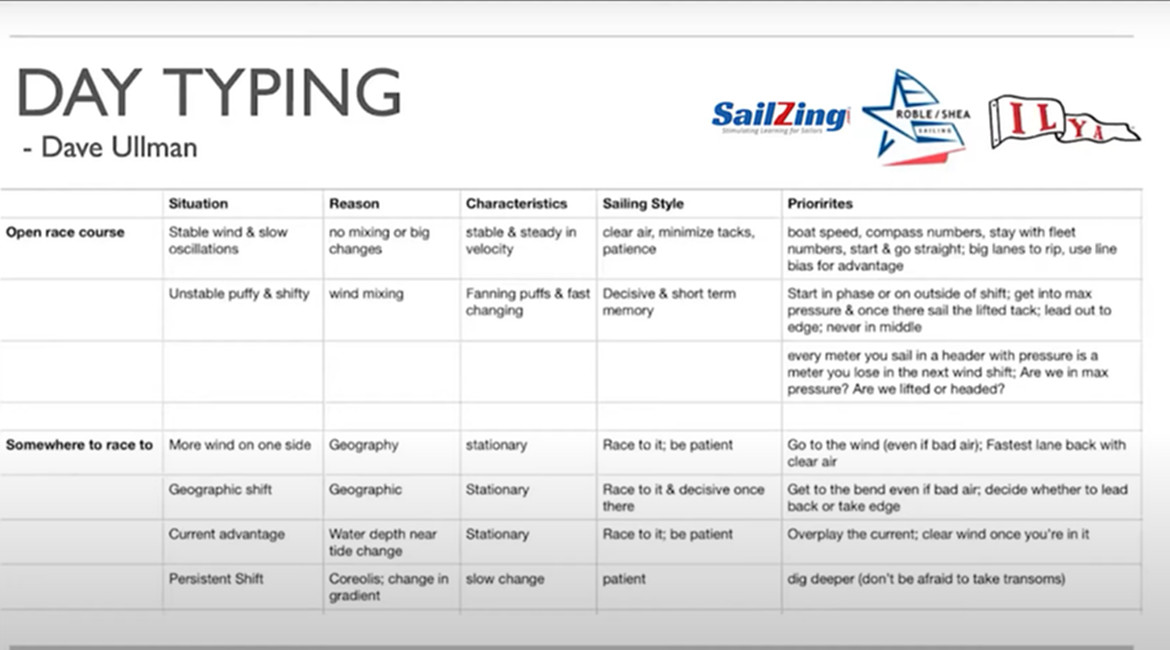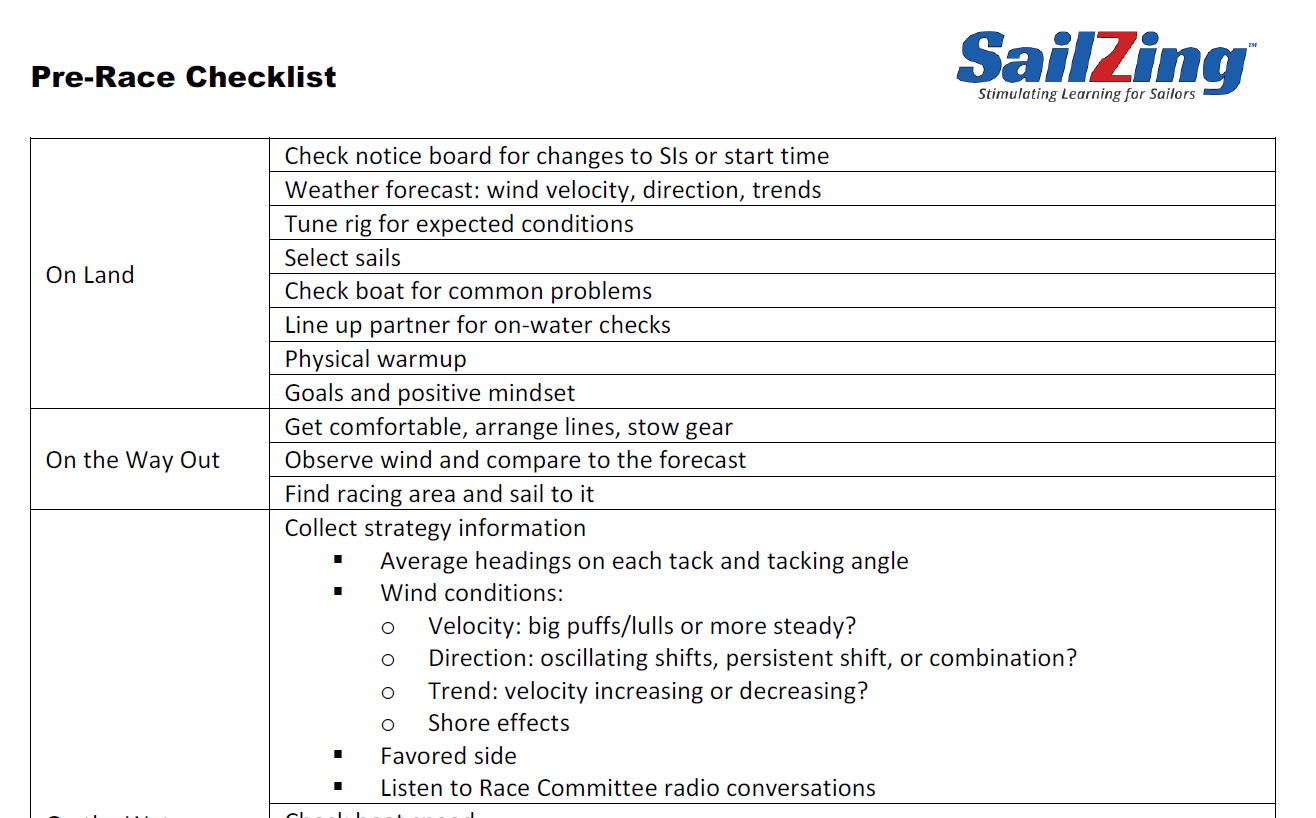In lake sailing, race strategy – using shifts, sailing in more wind, and course/fleet positioning – is often more important than pure boat speed. Different conditions require different strategies, and we’re always looking for better ways to think about strategy choices. In the ILYA Fast Forward Series, Steph Roble and Maggie Shea show us how to make a game plan based on race course types. They developed this concept working with Dave Ullman.
Watch the video excerpt or read the summary below.
Race Course Types
Roble and Shea think of two race course types: “open” and “somewhere to race to.” In “open” race courses, you let the wind determine where you go, rather than picking a side based on course factors. In “somewhere to race to” courses, one part of the course has a reliable advantage. To be successful in this type of course, you have to sail to that part of the course.
Roble/Shea’s system is similar to Stuart Walker’s three categories (oscillating shifts, one side advantaged, and none of the above), but some nuances of the Roble/Shea approach provided more clarity for your editor.
Open Race Course
If the wind behaves the same way across different portions of the course, you’re dealing with an open race course. This could occur for two entirely different reasons:
- Stable wind, with slow oscillations, due to lack of mixing of gradient wind with surface wind.
- Unstable wind – random puffs and shifts due to lots of mixing.
Roble/Shea characterize this type of course as having variability. By that, they mean that no one part of the course will be reliably favored.
Somewhere to Race To
“Somewhere to race to courses” have consistency. One portion of the course will be reliably favored, due to one or more reasons:
- Geographic shifts near land
- More wind on one side due to geography
- Persistent shift due to a developing sea breeze or a change in the gradient wind
- Smaller waves in one section of the course
Race Course Types and Sailing Strategy/Style/Mentality
In the video, Roble and Shea talk about how their sailing style and mentality change depending on the race course type. They don’t use the word strategy, but that’s what they’re really addressing.
Open Race Course Sailing Style
Your style on an open race course depends on whether the wind is stable or unstable.
Stable wind:
- Use starting line bias to get initial advantage
- Get to the first shift before your competitors
- Choose your starting location late to accomplish this
- Emphasize sailing on the lifted tack
- On a big lake, use compass numbers
- Patience – don’t tack until headed below the average wind direction
- Keep boat speed up and minimize maneuvers
Unstable wind:
- Head on a swivel, looking for puffs and shifts
- Emphasize sailing in max pressure and on the lifted tack
- Quick, decisive reactions
- Emphasize executing transitions
- Edges of course may be better than the middle
- Don’t rely on what happened earlier
“Somewhere to Race To” Sailing Style
- At the start, focus on getting a lane that allows you to sail toward the advantage
- If you don’t succeed, be willing to compromise lanes
- Be willing to duck boats
- Get to the advantaged location first
- Keep boat speed up
- Minimize maneuvers
- Patience; don’t tack away until you reach the advantage
- Stick to your game plan
Favored Side of the Course: Make Better Decisions
Upwind Strategy: Connecting the Dots
Sail the Lifted Tack – How and When?
Racing Strategy Choices: Positioning by Stuart Walker – SailZing Book Review



